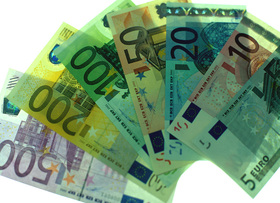

Established by the Treaty of Maastricht in 1993. The EMU places a ceiling on public spending and the funding of public expenditure, not least a ban on the printing and circulation of national money.
EMU had three stages of preparation, the third and final stage began on January 1st 1999 with the legal introduction of the Euro as a single currency. This means that between January 1st 1999 and the de facto introduction of the Euro as a means of payment (January 1st - June 30th 2002), the unit "Euro" and the national currencies of the Eurozone countries were legally considered as a single currency.
The EMU provides a common central bank for the countries which use the Euro (the Eurozone countries), the European Central Bank (ECB). The ECB issues the currency for the 12 Eurozone countries and thereby controls the issue of credit for the entire zone.
The Treaty of Maastricht demands low inflation. The ECB has decided to keep inflation in the Eurozone at 2% or less per annum. The ECB is not politically controlled and is forbidden by the Treaty from taking instructions from any government or any EU institution. The Treaty requires member governments to manage their economies so that they are consistent with the ECB’s monetary policy.
In order to join the EMU countries’ economies have to meet four criteria (convergence criteria). After joining, countries must agree to keep their spending at a certain level (Stability and Growth Pact).
Under the Stability and Growth Pact governments that run excessive budget deficits (i.e. spend more than their income), and do not attempt to solve this problem, may be fined.
In 2003 both Germany and France broke the rule stating that governments cannot run a yearly deficit of more than 3% of the Gross National Product (GNP). The two countries therefore risk being fined.
Links
See also Euroland, single currency and Optimum currency area